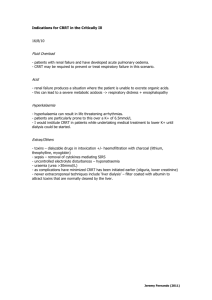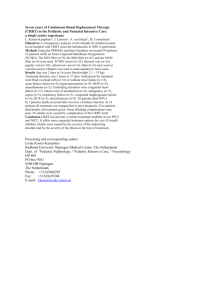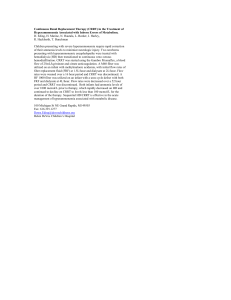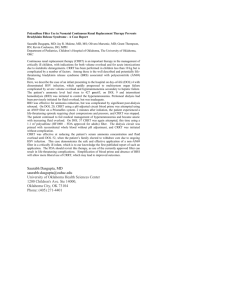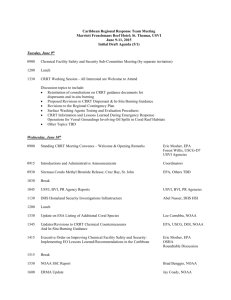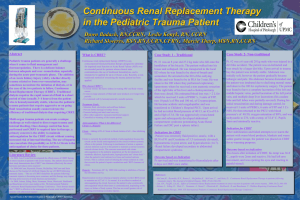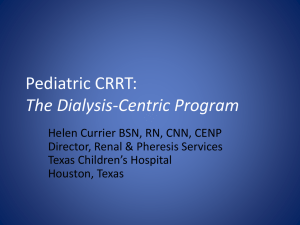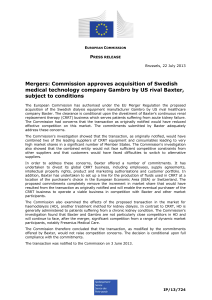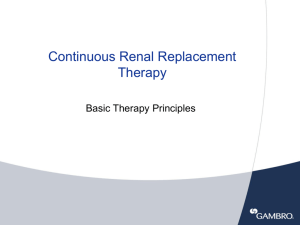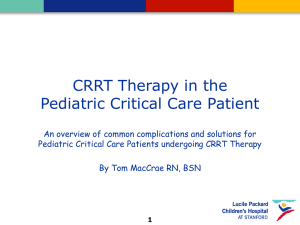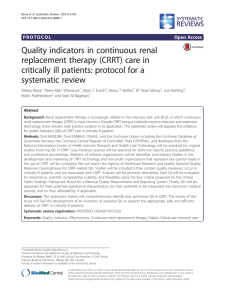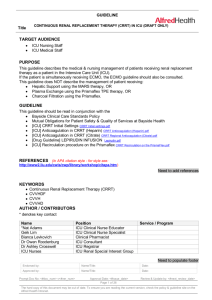SURVIVAL OF PEDIATRIC PATIENTS RECEIVING EXTENDED
advertisement
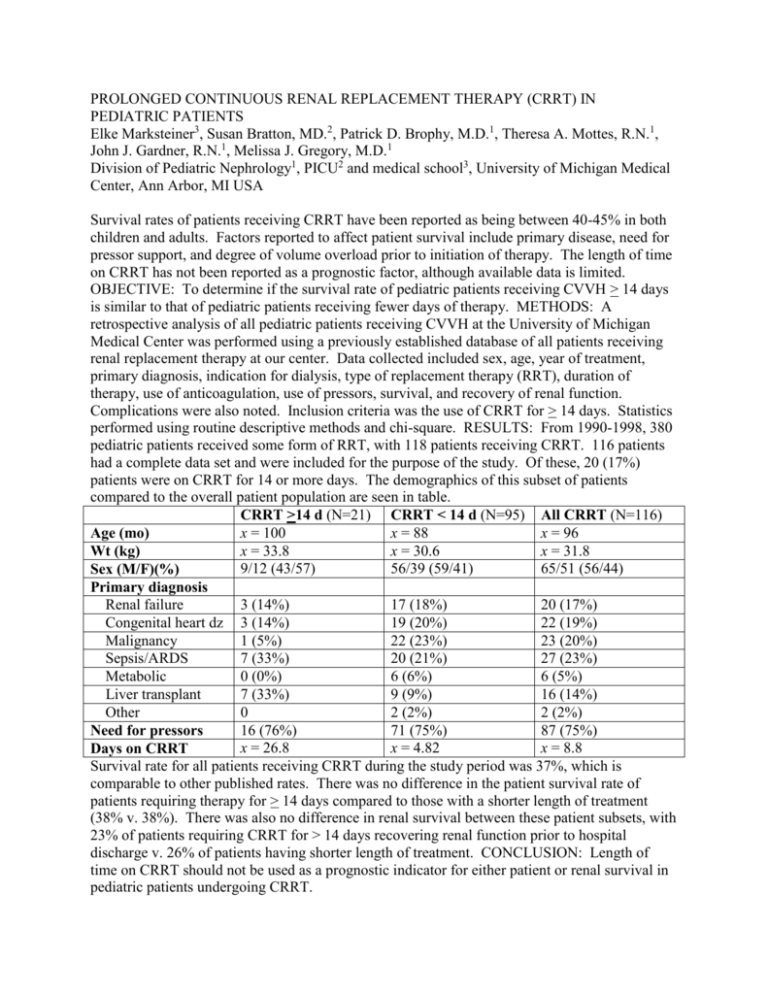
PROLONGED CONTINUOUS RENAL REPLACEMENT THERAPY (CRRT) IN PEDIATRIC PATIENTS Elke Marksteiner3, Susan Bratton, MD.2, Patrick D. Brophy, M.D.1, Theresa A. Mottes, R.N.1, John J. Gardner, R.N.1, Melissa J. Gregory, M.D.1 Division of Pediatric Nephrology1, PICU2 and medical school3, University of Michigan Medical Center, Ann Arbor, MI USA Survival rates of patients receiving CRRT have been reported as being between 40-45% in both children and adults. Factors reported to affect patient survival include primary disease, need for pressor support, and degree of volume overload prior to initiation of therapy. The length of time on CRRT has not been reported as a prognostic factor, although available data is limited. OBJECTIVE: To determine if the survival rate of pediatric patients receiving CVVH > 14 days is similar to that of pediatric patients receiving fewer days of therapy. METHODS: A retrospective analysis of all pediatric patients receiving CVVH at the University of Michigan Medical Center was performed using a previously established database of all patients receiving renal replacement therapy at our center. Data collected included sex, age, year of treatment, primary diagnosis, indication for dialysis, type of replacement therapy (RRT), duration of therapy, use of anticoagulation, use of pressors, survival, and recovery of renal function. Complications were also noted. Inclusion criteria was the use of CRRT for > 14 days. Statistics performed using routine descriptive methods and chi-square. RESULTS: From 1990-1998, 380 pediatric patients received some form of RRT, with 118 patients receiving CRRT. 116 patients had a complete data set and were included for the purpose of the study. Of these, 20 (17%) patients were on CRRT for 14 or more days. The demographics of this subset of patients compared to the overall patient population are seen in table. CRRT >14 d (N=21) CRRT < 14 d (N=95) All CRRT (N=116) x = 100 x = 88 x = 96 Age (mo) x = 33.8 x = 30.6 x = 31.8 Wt (kg) 9/12 (43/57) 56/39 (59/41) 65/51 (56/44) Sex (M/F)(%) Primary diagnosis Renal failure 3 (14%) 17 (18%) 20 (17%) Congenital heart dz 3 (14%) 19 (20%) 22 (19%) Malignancy 1 (5%) 22 (23%) 23 (20%) Sepsis/ARDS 7 (33%) 20 (21%) 27 (23%) Metabolic 0 (0%) 6 (6%) 6 (5%) Liver transplant 7 (33%) 9 (9%) 16 (14%) Other 0 2 (2%) 2 (2%) 16 (76%) 71 (75%) 87 (75%) Need for pressors x = 26.8 x = 4.82 x = 8.8 Days on CRRT Survival rate for all patients receiving CRRT during the study period was 37%, which is comparable to other published rates. There was no difference in the patient survival rate of patients requiring therapy for > 14 days compared to those with a shorter length of treatment (38% v. 38%). There was also no difference in renal survival between these patient subsets, with 23% of patients requiring CRRT for > 14 days recovering renal function prior to hospital discharge v. 26% of patients having shorter length of treatment. CONCLUSION: Length of time on CRRT should not be used as a prognostic indicator for either patient or renal survival in pediatric patients undergoing CRRT.
